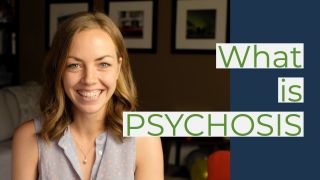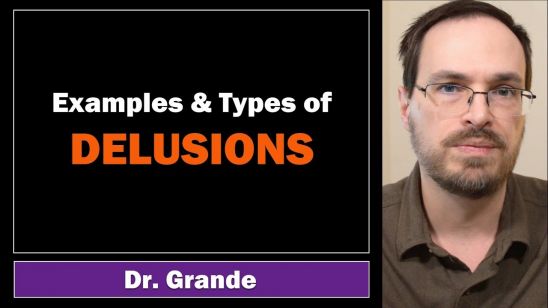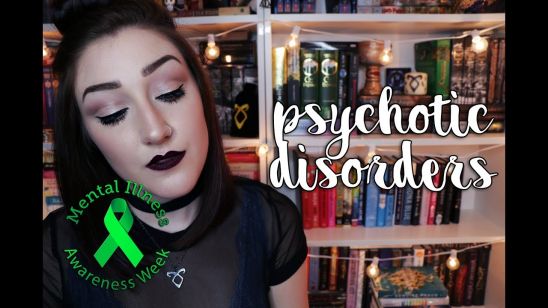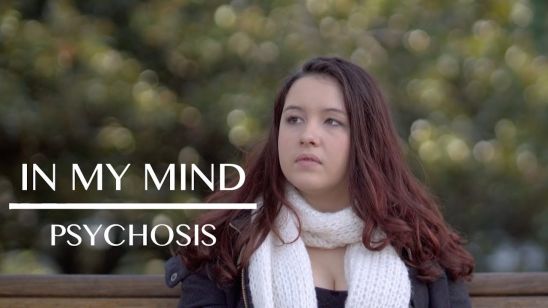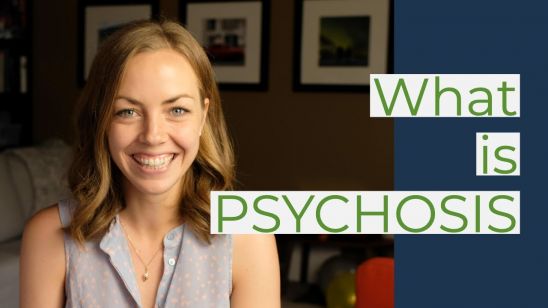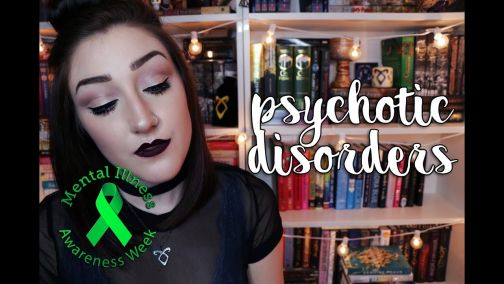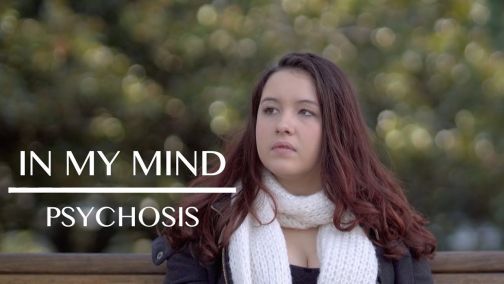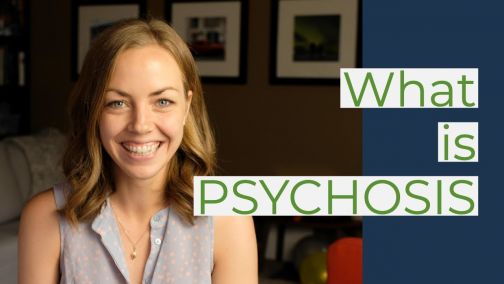Paraphrenia
A thought disorder
What is it?
Most thought disorders set in earlier life, somewhere between a person’s teen years and early 30s. It’s common for symptoms to come on slow in adolescence, and then fully “emerge” by the time they hit adulthood. This is the case for disorders like schizophrenia and schizoaffective disorder.
Paraphrenia is an exception to this pattern. It’s a mental condition similar to schizophrenia that sets in after the age of 40. It is characterized by paranoid delusions, and in some cases, hallucinations. People are often diagnosed with other conditions, such as schizoaffective disorder or delusional disorder.
Paraphrenia is considered a rare mental condition, affecting somewhere between 0.1% and 4% of elderly people. It has a much better prognosis than other psychotic disorders, like Schizophrenia, and commonly occurs alongside anxiety and depression spectrum disorders.
What are the symptoms?
People with paraphrenia experience what are known as the “positive” symptoms of schizophrenia. It does not come with the “negative” or “cognitive” symptoms of schizophrenia that affect a person’s personality, emotions and mental processing. Because of this, many people with paraphrenia appear outwardly normal outside of their delusions and/or hallucinations.
Positive symptoms include:
- Experiencing hallucinations (hearing or seeing things that aren’t there)
- Experiencing delusions (holding false beliefs regardless of them being disproved)
- Displaying disorganized thinking (switching quickly between topics or saying strange things)
- Having memory or attention problems
Delusions are the primary symptom and are often broken into seven different categories or themes. Persecutory delusions are the most common theme for people with Paraphrenia:
- Erotomanic: A person thinks that someone is in love with, often a celebrity or person of high social status. They may make attempts to get in contact with this person.
- Grandiose: A person believes that they have some form of unrecognized power insight including an amazing talent, special piece of knowledge, or a unique relationship with an important person/figure, such as God.
- Jealous: A person is convinced that their romantic partner has been unfaithful in some way.
- Persecutory: A person believes that someone is trying to harm them or a loved one in some way. This includes being cheated on, spied on, drugged, kidnapped, murdered, slandered or stalked. They may make reports to law enforcement about these perceived threats.
- Somatic: A person believes they’re experiencing some sort of physical sensation or medical problem, such as having bugs crawl on their skin, or having cancer.
- Mixed: A person has delusions that are a combination of the above themes.
- Unspecified: A person has delusions that don’t fall into the above categories.
Paraphrenia hallucinations are normally auditory (hearing things that aren’t real) but can be visual, olfactory (relating to smell) and tactile (relating to touch).
What are some common warning signs?
Paraphrenia can be hard to spot. Most people function normally at home, work and in their social lives despite having delusions. The condition does not come with other noticeable psychotic symptoms, such as strange speech patterns, a lack of hygiene or bizarre emotional reactions. This is one of the key differentiators between paraphrenia, and conditions like schizophrenia.
If you think a loved one might be experiencing delusions, pay close attention to the concerns they express, whether they be about their job, their romantic partners, their health or other facets of their life.
Ask yourself the following questions:
- Do they believe they’re connected to people they don’t know?
- Are they convinced that they’re in danger, without having done anything to make themselves a target?
- Are they overly jealous in their relationships, and often expressing romantic concerns that seem unfair or unwarranted?
- Do they talk about physical symptoms or disorders that don’t appear to exist?
- Most importantly, do they hold onto these beliefs even after being presented with ample evidence that they aren’t real?
These behaviors can’t confirm a paraphrenia diagnosis, but they do hint at one. If you feel comfortable doing so, talk to your loved one about this behavior and why you’re concerned.
What causes Paraphrenia?
The exact causes are unknown. Doctors believe a range of factors play a role in its development, including:
- Genetics: People are more likely to develop paraphrenia if they have a family history of the disorder or other forms of psychosis.
- Brain trauma: Many people who develop paraphrenia have recently suffered a stroke, tumor or other neurological condition. This leads doctors to believe that there is a link between brain dysfunction and psychosis.
- Environmental: People who are antisocial and/or isolated are at a higher risk for Paraphrenia.
- Substance Abuse: Some studies show a correlation between heavy drug use and psychosis.
How is it treated?
Effectively managing paraphrenia often involves a combination of psychotherapy and medication. Healthy lifestyle habits and social support are recommended as well.
Psychotherapy is a broad term that refers to a range of therapeutic approaches. Common models for coping with Paraphrenia are:
- Individual psychotherapy: One-on-one sessions that help people better understand and manage their symptoms.
- Cognitive behavioral therapy (CBT): A therapeutic model that challenges negative thinking patterns and behaviors. In CBT, a therapist will help a person establish healthy coping mechanisms for their delusions and hallucinations.
Medication is considered a cornerstone of treatment, with antipsychotics being the most commonly prescribed drug. While effective, they are known to have heavy side effects, which may make people hesitant to take them.
There are two classes of antipsychotics — first generation (conventional) and second generation (atypical). First generation antipsychotics are older, cheaper and come with more substantial side effects. Second generation are newer and come with less.
- First generation/conventional: Chlorpromazine (Thorazine), Fluphenazine (Prolixin), Haloperidol (Haldol), Loxapine (Oxilapine), Perphenazine (Trilafon), Thioridazine (Mellaril), Thiothixene (Navane)Trifluoperazine (Stelazine)
- Second generation/atypical: Aripiprazole (Abilify), Asenapine (Saphris), Brexpiprazole (Rexulti), Cariprazine (Vraylar), Clozapine (Clozaril), Iloperidone (Fanapt), Lurasidone (Latuda), Olanzapine (Zyprexa), Paliperidone (Invega), Quetiapine (Seroquel), Risperidone (Risperdal), Ziprasidone (Geodon)
It’s important to remember that treatment plans are personalized. If you’re seeking help, make sure you work one-on-one with a doctor to create a plan that fits your needs. Just because a medication or therapy helps someone else recover, doesn’t mean it’ll be the right solution for you. Don’t ever feel guilty about asking for help, taking meds or going to therapy. Addressing your mental health is a productive and courageous thing to do.
How can I help a loved one with Paraphrenia?
It can be hard to know how to react when someone you love isn’t doing well. Do they want to talk about it, or would they prefer to keep their experiences private? Will you push them away by starting the conversation?
There are no easy answers to these questions. Every person handles their mental health differently. That said, we all want to feel loved and supported. Showing someone that you’re invested in their wellbeing can make a world of difference. Here are some ways to do so:
Here are some ways to do so:
- Educate yourself: Read up on symptoms, treatment options, and healthy living recommendations. Try and understand what your loved one is going through so you are better equipped to talk to them about it. This will also make you a valuable resource when it comes time to find treatment.
- Advocate treatment: Asking for help can be hard. Societal stigma often keeps people from opening up to others about their symptoms. Support your loved one by helping them research different treatment methods, or doctors in their area. If they’d like, go to a few sessions with them. Remind them that there’s nothing weird about getting help, and that you’re proud of them for following through.
- Use empathy: The delusions and hallucinations associated with paraphrenia feel very real. Try and refrain from snapping at them when they are in the midst of an episode. Stay calm and remember what they’re going through. Remind them that you’re there for them and that you love them.
- Be patient: Don’t take it personally if they lash out at you. They are battling something that’s very hard to overcome. Their distance has nothing to do with who you are as a person. Keep showing up for them even when it feels like it’s not helping. The act alone lets them know that they have people in their life who care.
Remember to take care of yourself. Find counseling of your own if you are struggling to cope with their condition.
What other resources are out there?
Want to learn more, find a doctor, join a support group or speak to a counselor? The below resources might be able to help:
- Schizophrenia and Related Disorders Alliance of America
- Schizophrenia Society of Canada
- Zur Institute
- Crisis Text Line
- BetterHelp
- Psychology Today Directory
- American Psychiatric Association
- Medicaid Eligibility Information
- Open Path Collective
- Resources for POC, LGBTQ+ and disabled individuals
- Anxiety and Depression Association of America
- National Network of Depression Centers
- Medicine Assistance Tool
- NeedyMeds
- Erika's Lighthouse
- Anxiety Network
- Anxiety Central Forums
- National Social Anxiety Disorder Center
Support our work
We’re on a mission to change how the world perceives mental health.














